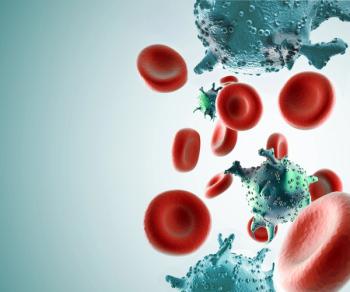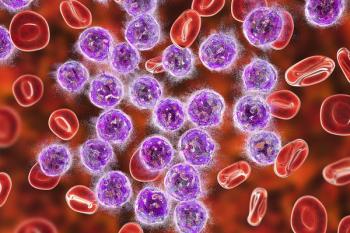
Differences Identified in DLBCL Mutational Landscape in African American Populations
Researchers were able to establish possible mechanisms that may contribute to racial differences in incidence, patterns of presentation, and survival in patients with DLBCL with African ancestry.
Findings published in Cancer indicated that the unique prevalence and patterns of mutations in diffuse large B-cell lymphoma (DLBCL) highlight a substantial distinction in the mutational landscapes of DLBCL arising in different ancestry groups.
More specifically, researchers suggested that this research points to the involvement of different oncogenic genes and pathways in African American populations and establish possible mechanisms that may contribute to racial differences in incidence, patterns of presentation, and survival.
“The current study provides a model for disentangling factors that contribute to racial differences in outcomes for patients with hematological malignancies and supports the development of interventions that overcome these barriers and improve survival,” the authors wrote.
To better recognize the influences of genetic ancestry on tumor genomic alterations, investigators estimated the genetic ancestry of 1001 previously evaluated patients with DLBCL using unsupervised model-based Admixture global ancestry analysis applied to exome sequencing data and assessed the mutational profile of 150 DLBCL driver genes in tumors acquired from this cohort. Overall, global ancestry prediction identified 619 patients with greater than 90% European ancestry, 81 patients with greater than 90% African ancestry, and 50 patients with greater than 90% Asian ancestry.
When compared with those who had European ancestry, patients with African Ancestry were generally aged 10 years younger at the time of their DLBCL diagnosis and were more likely to present with B symptoms, elevated serum lactate dehydrogenase, extranodal disease, and advanced stage disease. Moreover, those with African ancestry had worse overall survival (OS) compared with patients with European ancestry (median, 4.9 years vs 8.8 years; P = 0.04).
“It is becoming increasingly apparent that host genomic factors such as germline variants can act as expression quantitative trait loci, thereby affecting the expression of cancer driver genes,” the authors wrote. “These germline variants may be preferentially found in certain populations, which potentially could explain the differences in disease severity and therapeutic response observed between some population groups.”
Recurrent mutations of MLL2 (KMT2D), HIST1H1E, MYD88, BCL2, and PIM1 were identified across all ancestry groups, which researchers indicated suggests shared mechanisms underlying tumor biology. The investigators also found 6 DLBCL driver genes that were more commonly mutated in patients with African ancestry compared with patients with European ancestry, including ATM (21.0% vs 7.75%; P < 0.001), MGA(19.7% vs 5.33%; P < 0.001), SETD2 (17.3% vs 5.17%; P < 0.001), TET2 (12.3% vs 5.82%; P = 0.029), MLL3 (KMT2C) (11.1% vs 4.36%; P = 0.013), and DNMT3A (11.1% vs 4.52%; P = 0.016).
“Future studies are required to establish the role of these missense mutations in tumor development, progression, and differential responses to chemotherapy across ancestry groups,” the authors wrote. “None of these genes was found to have a prognostic impact on OS, suggesting that the integrated analysis of pathways may be more relevant than individual genes. This approach may overcome the challenge of the low frequency of these genes.”
Researchers suggested that larger epidemiologic studies that include the current study factors as well as gene expression, copy number, and genome sequencing data are necessary to better understand the complex interactions between these variables and their contributions to disparities in DLBCL outcomes.
“Ideally, such data should be collected from population-based samples to provide a representation of general clinical practice and to avoid skewing toward academic settings that may overrepresent patients with poor-risk genomics,” the authors wrote. “Such studies also may require oversampling of ethnic minority groups to adequately evaluate ethnic diversity.”
Notably, socioeconomic status and other environmental factors were not available in the data set used in the current study. Therefore, it is not clear as to what extent these factors could have affected the genetic abnormalities and observed racial disparities.
Reference:
Lee MJ, Koff JL, Switchenko JM, et al. Genome-Defined African Ancestry Is Associated With Distinct Mutations and Worse Survival in Patients With Diffuse Large B-Cell Lymphoma. Cancer. doi:10.1002/cncr.32866.
Newsletter
Stay up to date on recent advances in the multidisciplinary approach to cancer.

















































































